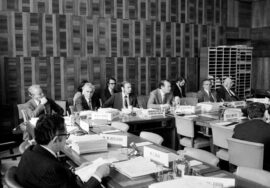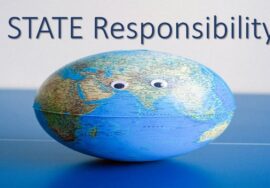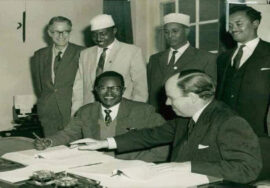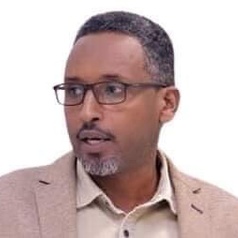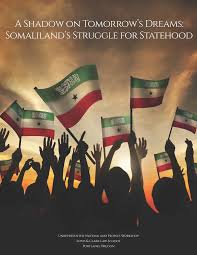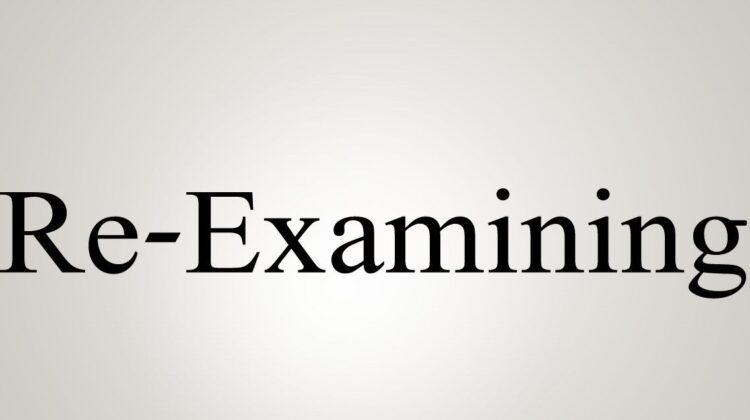
Re-examining ‘post‐post’ independence of JSL
Abstract:
The Republic of Somaliland, which is not internationally recognized, marked 65 years of independence from British rule on June 26th, 2025. Somaliland marked 34 years of liberation from a brutal dictatorship on May 18th, celebrating a second “Independence Day” that commemorates its 1991 declaration of independence from the collapsed Somali state. This paper analyzes the connection between state formation and evolving patriotism in Somaliland, a prime example of regional sovereignty changes in post-post-independence in the Horn of Africa.
Somaliland’s patriotic narratives are being shaped and reshaped in public performances, influenced by the 18 May structures and a thriving public sphere, all while the quest for international recognition persists. Somaliland’s ‘independence’ anniversary celebrations in May 2025 will mark 34 years since its recognition limbo in international relations, while its diplomatic status remains uncertain.
Introduction
Although the Republic of Somaliland lacks international diplomatic recognition after 34 years of independence, this period has fostered novel political organizations and a distinct national identity within the Horn of Africa’s former British Somaliland region.
The Horn of Africa’s map is being redrawn by Somaliland’s democratic progress and peaceful leadership changes, resulting in new governance systems (Renders, 2007).
Somaliland’s rise as an independent and increasingly sovereign entity is highly contested within the region (especially by Djibouti and Somalia) and internally (due to influence from Somalia and Djibouti, and Darood minority groups). The research explores the impact of competing narratives about patriotism, self-determination, and regional geopolitics on the conceptualization of nationhood and political development within the Somali Horn.
‘Post‐post’‐Independence: a useful term?
Somaliland’s unique path to independence differs from other African nations because it briefly held internationally recognised sovereignty in 1960, between British withdrawal and its unlawful merger with Southern Somalia. Although this independence only lasted five days, it followed a period of British protectorate that shaped a unique Somaliland identity, partly due to Britain’s unusually indirect rule. To secure trade routes to India via the Gulf of Aden and provide Aden’s British garrison with meat, the colonial power prioritised coastal control and collaboration with friendly local leaders, avoiding deep incursions into Somaliland. Although this strategy evolved due WWII and MadMullah both against the local, it differed from Italian approaches in Somalia. Somalilanders today often highlight that their nation was never colonised. That is true, British rule’s societal impact differed from that of the Italians in Somalia.
1) The decline and collapse of Barre’s military regime and the unravelling of a unitary Somali state is well documented (Doornbos & Markakis 1994, Luling 1997, Lewis 2008,) with its roots in the dictator’s manipulation of clan networks (in the name of anti‐tribalist ‘scientific socialism’), failed irredentist adventures against Ethiopia, and the decline of Cold War super‐ power patronage. The disintegration of the Mogadishu‐based state unleashed civil war in the south which played out along clan lines (Lewis 1998), whose configurations and technologies of violence had been altered by the development of post‐colonial authoritarian sovereignty, Cold War militarisation and new forms of class and rural/urban stratification and modes of accumulation (Besteman 1996 & 1998). The exclusionary dynamics of military rule marginalised the Somalilanders hub of Hargeysa (whose elites felt they had sacrificed far more than the Southerners in the Union of 1960) which eventually provoked resistance and subsequent state suppression. Hargeysa was the centre and target of operations for the Isaaq‐clan dominated Somali National Movement (SNM) whose campaign against the regime initially operated militarily from across the Ethiopian border before becoming more audacious, penetrative and successful in destabilizing the Barre’s hold on the Somaliland. Insurgency brought counter‐insurgency which culminated in 1988 with extensive aerial bombardment, an assault which razed most of Hargeysa to the ground and expelled the vast majority of residents as refugees from the carnage (Adam 1995: 74). With the collapse of the regime in Mogadishu between 1990 and 1991 the SNM in the Somaliland formed the political nucleus of the joint population of Somaliland declaration of Somaliland’s independence – or, put another way, the renouncement of the illegal failed union doctored by SYL elites of Darood/Hawiye between the former territories of British Somaliland and trusteeship Somalia signed in 1960. The history of Somaliland clan political negotiations, the declaration of independence and subsequent conflict and reconciliation is dealt with by Bradbury (2008), but what is of note here is the context of Hargeysa’s repopulation and reconstruction in the period from the mid to late 1990s. State formation in the Somaliland case has been a process which has taken place simultaneously with the systematic and extensive reconstruction and expansion of its national capital, Hargeysa. Lacking international recognition this process has largely been driven through the returning of refugees and finance sourced from the global Somali diaspora and the remittance economy (Ahmed 2000). The city today, whilst physically and psychologically still bearing scars of its past destruction, is a dynamic regional hub of commerce, trade and communications. The remittance economy remains a prevalent source of income and capital, and ties Hargeysa (along with the import economy driven by the operations of Somaliland’s port city Berbera) into various international markets and communities. Hargeysa boasts a relatively advanced commercial telecommunications sector and higher education facilities, often financed by diaspora returnees, are growing rapidly. At the same time, Hargeysa struggles from serious infrastructural deficiencies (roads, public services and healthcare delivery) and high rates of youth unemployment. The institutions and ministries of the Somaliland state project are physically based in Hargeysa and local law enforcement and judicial mechanisms function. A local print, online and radio media has developed (Hoehne 2008) which is extensively accessed and remains relatively independent of state control. It is within this context of the (re)construction of a physical urban environment, economy that post‐post colonial performance patriotism is to be addressed.
Opponents to Somaliland’s independence argue that the Hargeysa‐ based political project represents the specific interests of the Isaaq clans and opposition in the East of the territory is usually articulated in terms of grievances of the Dhulbahante and Warsangeli (of the Daarood clan family) who are minority in Sool/Sanaag in those areas but perceive themselves as an unrepresented minority in the Somaliland state, Puntland of Somalia region in the frontier of Somaliland is after this feelings Harti Clan Nation to obstacle Somaliland recognition . Regional Somalia and Djibouti discontent is further intensified by potential future resource (hydrocarbon) exploitation in Somaliland.
The micro‐politics of alliance and affiliation is more complicated on the ground and often such processes are determined by dynamics playing out inside the Horn of Africa and within clan families and sub‐clan lineages (as Hoehne’s discussion of the Darood, referenced above, illustrates). On the more general level wider Somali distrust of the Somaliland recognition centres around its threat to wider Greater Somalia territorial imaginary ‘unity’ and suspicions for Somaliland is fuelled by the malign agendas of external actors (such as Ethiopia which is supportive of Somaliland, though certainly not a sponsor of its diplomatic recognition) who seek to divide and thereby control the Somali Horn.
The Somaliland counter‐narrative stated:
- Somalia people declared unbelievable bloodthirsty against the suffering isaaq people genocide and clan cleansing happen because the Somalia military state led operations against the Isaaq‐dominated SNM movement 1982-1988 which the population of Somaliland children, elderly and women were not spare in the killing fields.
- Similarly Eastern Sool/Sanaag Dhulbahante and Warsangeli elders signed‐off on independence at the time – a fact that President Silanyo once demonstrated to a foreign journalist by getting up and taking down off the wall the framed signed document
- Furthermore, Somaliland state is not simply dominated by the Isaaq ‐ President Rayaale who served between 2002 and 2010 was a Gadabuursi of the Dir clan family ‐ and that Somaliland possess a functioning and representative democratic system.
A (second) independence anniversary: May 18th 2011
On May 18th 2035 Somaliland celebrated its 34th anniversary of independence, independence not from a European empire, but a post‐colonial regime which centralised power away from the politically marginalised and militarily repressed Somaliland including committed genocide as well as ethnic cleansing.
For Somaliland ‘second’ independence came not through an orderly military ceremony and a lowering and raising of flags, but in a setting of utter devastation, inter‐clan violence and the total collapse of overarching state power. Four decades of physical rebuilding in Hargeysa have created a setting in which new repertoires of nationhood have been developed and deployed, culminating in the celebrations of May 18th 2025.
In the run‐up to the festivities the walls and blast‐barricades around the Presidential palace in the centre of the city were themselves painted in the Somaliland flag colours and during the celebrations this red, green and white were everywhere, and incorporated into all manner of clothing and banners. The flag itself includes a central black star and the Arabic script of the Shahadah (La Ilaha Ill‐Allah, Muhammadan Rasulullah, there is no God except for Allah, and Muhammad is the messenger of God).
In understanding how bodies and groups come to represent and perform the nation in this instance we must also consider the audience to which it is projected. Hanging above the President and assorted dignitaries was a banner proclaiming in English (and in French, amongst other languages) ‘the international community is obliged to accept the wishes of our people’, a clear message that this display of nationhood was very much orientated towards an external audience: these are ‘our’ armed forces, ‘our’ people and this deserves recognition.
The parade was followed by a rally held in Liberty Garden (Beerta Xoriyada) near to the presidential compound. The site was packed with people (predominantly young men and women organising themselves into largely gender segregated groups) who had come to celebrate the occasion under their own free will, once again bringing flags and banners, some of which, written in English, were explicitly aimed at an external audience, calling on the African Union and others Nations to recognise Somaliland. Between the podium and the crowds were positioned a significant police presence and numerous local journalists and television cameras. Also in this area were seated wheel‐ chair bound War veterans, a regular feature of political rallies and events and a nod to what Somalilanders refer to as their liberation struggle of the bloodthirsty regime of Somalia.
Concluding remarks
Despite the historical excesses of statehood in the Somali Horn, the perennial incompatibilities which have existed between a traditionally highly mobile and egalitarian pastoral population and a Weberian‐ bureaucratic territorial state structure (Luling 1997), as well as the fact that in the post‐1991 context the absence of state authority has not hindered the (re)energising of certain hugely important sectors of the Somali economy such as the livestock trade (Little 2003), the idea of administrative statehood remains the common‐sense objective of political elites and popular opinion in Hargeysa.
Somaliland state is not Isaaq clan’s self-determination but a nation of different tribe’s rights to recognition as a country.
Reconfigurations of the statehood in the Somaliland case may also prompt the observer to question the relationship between sovereignties as constituted by the fact of international recognition and actual articulations on the ground. For example, the development of territorial sovereignty in the absence of international recognition should not necessarily be regarded as surprising; if one considers the broader course of international finance regimes over the last thirty years, enduring ‘Washington‐consensus’ logics of African state dis‐ empowerment, and advances of ‘transnational governmentality’ (Ferguson & Gupta 2005: 114) as paradigms of 21st Century global political development, then one might argue that Somaliland’s localised development of governance has actually benefited from a relative isolation from such networks of finance and conditionality. Similarly, one might note how the stakes attached to a seat at the international table in terms of access to finance and military aid only serves to establish state structures as themselves something worth fighting over, a persistent feature of state contestation in Somalia, yet scarcely a relevant concern for Somaliland’s state‐makers who have, for the last 34 years, operated in diplomatic limbo of recognition.
For the Somaliland case such legitimacy derives, in part, from the state’s continued championing of a nationalist narrative through a foreign policy centred around the question of international recognition. Whilst ‘recognition’ remains a perennial feature of any discussion on Somaliland developments – both economic and political – indicate that change is not beholden to any external diplomatic process and Somaliland is establishing itself as a hub of significant influence where nationalist expressions are concentrated and reproduced in political performance and a growing public sphere.
Mitchell argues that the state should not be analysed as a set of structures but rather as ‘the metaphysical effect of practices that make such structures appear to exist’ (1991: 85). In context of ‘post‐post’‐coloniality we must interrogate the normative bases of these structures which are being projected and the conditions under which they are performed and reproduced. Ultimately the challenge may lie in adequately conceptualising both the real‐politick of actors operating with the constraints and opportunities of de facto sovereignty, as well as the discursive and imaginative effects of articulations of nationhood and the rhetoric of ‘deserving’ sovereignty (whereby it is, paradoxically, the absence of international recognised sovereignty which actually contributes to the narrative of Somaliland’s entitlement and therefore the discursive grounding of its popular legitimacy). One might argue that Somaliland’s earliest claims of independence should not necessarily be read at face value, and may well have represented a wider strategy of elites looking to solidify their power bases with an eye on the future reunification of Somalia. Somaliland’s first president, Mohamed Haji Ibrahim Egal, had views on independence which were contradictory, ambiguous and ultimately changeable (Bryden 2003: 347), and yet exerted a great deal power in configuring the political foundations of the de facto state. The ‘normalisation’ of non‐recognition in the political discourse of Somaliland’s ‘deserving’ sovereignty certainly provides opportunities for instrumental applications of nationalism by elites, and yet the popular reproductions of imaginations of the state may also be equally foundational for new technologies of governance which are emerging in the region.
By Said Abdu



